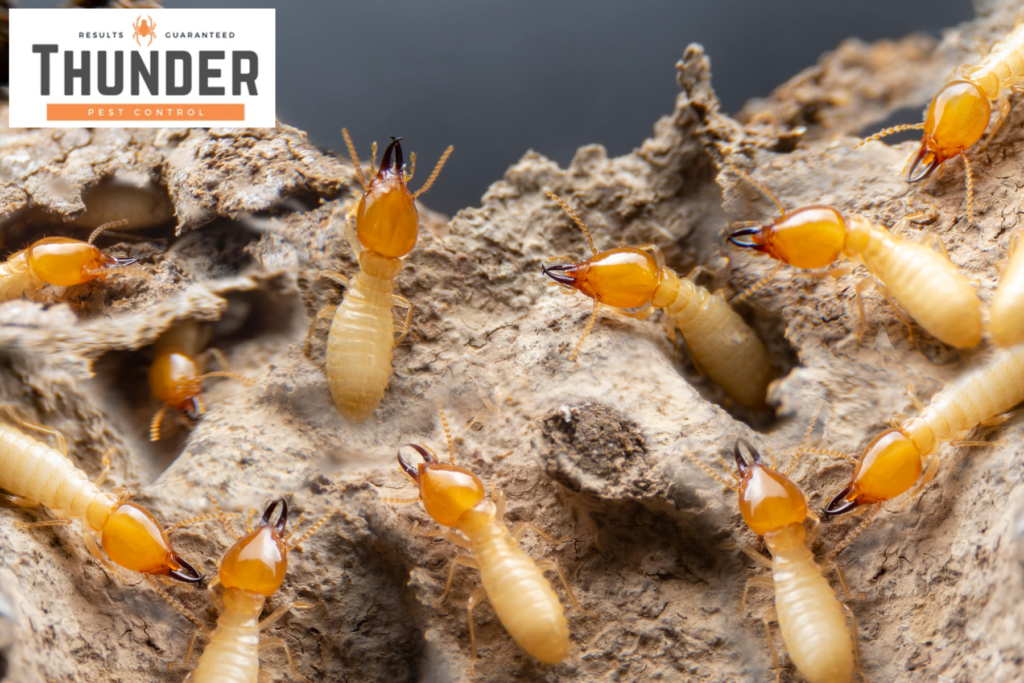When it comes to destructive household pests, termites top the list. While most people are familiar with the damage termites can do to wooden structures, fewer understand the behavior and significance of a termite swarm. Spotting one may seem like a random nuisance, but it’s actually a major red flag that requires immediate attention.
A termite swarm isn’t just a group of bugs flying around it’s a warning sign that a mature termite colony is nearby, possibly even inside your home or business. If you’ve ever seen what looks like a cloud of flying ants suddenly appear indoors or around your property, there’s a good chance you were witnessing a termite swarm in action.
What Is a Termite Swarm?
A termite swarm occurs when a colony of termites releases a group of reproductive members, called alates or swarmers, into the air. These winged termites leave their nest to mate and start new colonies. It’s nature’s way of expanding the termite population and for homeowners, it’s nature’s way of saying, “You have a problem.”
Swarming is triggered by warm temperatures and high humidity, which is why you’re most likely to see it during spring and early summer, often after a rain. These swarmers don’t bite or sting, and they don’t live long, but their appearance is far from harmless. Where there are swarmers, there’s a colony. And where there’s a colony, there’s the potential for serious damage.
What Do Termite Swarmers Look Like?
Termite swarmers are often mistaken for flying ants, but there are key differences:
- Wings: Termite swarmers have two sets of wings that are equal in length and extend far beyond the body. Ants have uneven wings.
- Body shape: Termites have a straight, uniform waist, while ants have a pinched waist.
- Antennae: Termites have straight, beaded antennae. Ants’ antennae are elbowed.
If you’re not sure whether you’re seeing ants or termites, it’s safest to assume the worst and call a professional for an inspection.
Why Termite Swarms Matter
1. They Indicate a Mature Colony Nearby
A termite colony usually takes a few years to mature before it produces swarmers. So, if you see a swarm, it’s a sign that a fully developed colony is already active in or around your property. Even if the swarm occurred outside, termites could easily be tunneling through your home’s foundation, walls, or wood framing.
2. They’re Looking to Start New Colonies
Once termite swarmers land, they shed their wings and seek out soil or crevices to begin a new colony. If they find the right environment—moisture, wood, and shelter—these newly paired termites can establish a fresh infestation right under your nose.
3. They Often Go Unnoticed
Swarming termites are most active during the day, especially in the morning or late afternoon. Indoors, you might notice dead swarmers near windowsills or light sources. Outdoors, you might spot wings or discarded body parts near doors or in spider webs. Because these insects don’t live long above ground, many people dismiss them without realizing their significance.
What Causes a Termite Swarm?
Several factors can trigger a termite swarm:
- Seasonal changes: Warm temperatures and increased humidity signal termites that it’s time to spread.
- Mature colonies: Only well-established colonies produce swarmers.
- Indoor infestations: Swarms occurring inside often mean the colony is already in the structure.
If you notice a swarm indoors, it’s a serious sign that termites may be living inside your walls or floors—and you need to act quickly.
Other Signs of a Termite Infestation
Even if you haven’t seen a swarm, other signs can indicate an active infestation. Be on the lookout for:
1. Termite Tubes
Also known as mud tubes, these pencil-thin tunnels are used by termites to travel from the soil to wood while staying protected from open air. These termite tubes are often found along foundations, walls, or crawl spaces and are one of the most common and reliable signs of termite activity.
2. Hollow Wood
Termites feed from the inside out, so tap on wooden beams or baseboards. If they sound hollow or crumble easily, it may be due to termite damage.
3. Discarded Wings
After mating, swarmers shed their wings. If you find small, clear wings scattered around your home, particularly near light fixtures or window sills, it’s likely a swarm has occurred.
4. Frass (Termite Droppings)
Drywood termites leave behind tiny, pellet-shaped droppings called frass. These may resemble sawdust or coffee grounds and are often found near baseboards or entry points.
Why DIY Solutions Are Not Enough
While hardware stores offer sprays and bait traps for termites, DIY treatments are rarely effective against an established infestation. Termite colonies can contain thousands sometimes millions of insects, and they’re experts at staying hidden. Only professional pest control Edmond OK can provide the tools and knowledge needed to locate the colony and eliminate it completely.
Additionally, attempting to treat a termite swarm on your own can waste valuable time. By the time you notice visible signs, damage may already be significant. That’s why turning to experts in Edmond pest control is your best line of defense.

When to Call a Termite Expert
Don’t wait until you see damage to call in the pros. If you’ve noticed any of the following, it’s time to contact a termite control specialist:
- A sudden appearance of winged insects indoors or outdoors
- Discovery of termite tubes
- Discarded wings or hollow-sounding wood
- Signs of wood damage or bubbling paint
Prompt professional attention can prevent a minor issue from turning into a structural nightmare.
Thunder Pest Control: Your Local Termite Experts
At Thunder Pest Control, we specialize in identifying and eliminating termite infestations throughout Edmond and the surrounding areas. Our team understands the science behind a termite swarm and uses advanced tools to detect even the most hidden colonies. We provide safe, effective treatment options that protect your property and give you peace of mind.




